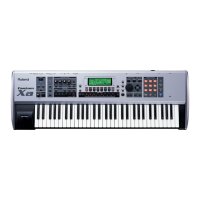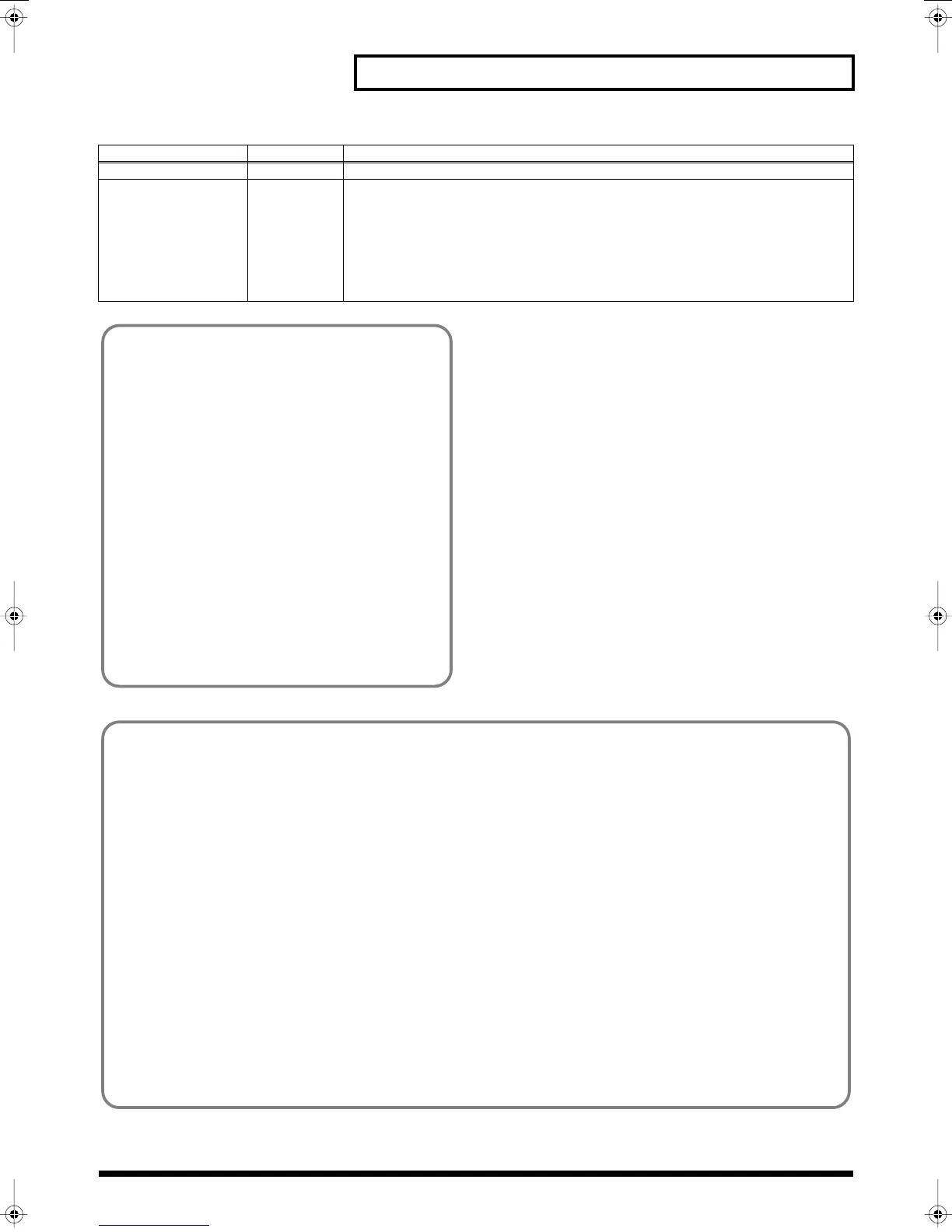199
Settings Common to All Modes (System Function)
MTC Offset Time Frame
0–29 (frames) Coordinates the playback timing of the Fantom-Xa and the external device in a frame units.
MTC Error Level 0–10 Determines how often the reception status is checked when MTC is being received from an ex-
ternal device. Stop synchronization if a problem becomes apparent with the check.
The checking interval will be longer for larger values.
In strict terms, the lower the numerical value set, the more accurate the check is. However,
playback may be stopped overly frequently if too rigorous a check is made, and this soon be-
comes inconvenient. By raising the Error Level setting, then even if problems with the recep-
tion of MTC do occur, synchronization can then continue as long as such problems remain at
a level that does not cause undue problems.
Parameter
Value Explanation
MIDI Clock and MTC
MIDI Clock and MTC (MIDI Time Code) are both messages
used for synchronization. Select either of them depending on
the application.
MIDI Clock transmits and synchronizes operations to a
sequencer’s performance tempo, whereas MTC synchronizes
operations between devices based on an absolute time. Since
Roland VS Series workstations are hard disk recorders, they
cannot send MIDI Clock. Therefore, using a MTC is convenient
for synchronization of the hard disk recorder and the Fantom-
Xa. However, VS Series devices also feature specialized tracks
for recording MIDI Clock, so with the Fantom-Xa’s MIDI Clock
recorded in this manner, we have another synchronizing
technique in which the VS device appears to be sending MIDI
Clock (although it is actually playing back tracks to which MIDI
Clock has been recorded). However, since the tempo must be
recorded to the VS sync track beforehand, MTC is only
convenient in synchronizing with songs that do not contain
great amounts of tempo data.
Types of MTC
The types of MTC that can be selected by the Fantom-Xa are
shown below. Select the same frame rate as that set for the
external device. When not using a video device, then any frame
rate may be selected as long as the rates are the same on both
devices being synchronized.
30: This is 30 frames per second, non-drop format. This is
used by audio devices such as analog tape recorders, and
for NTSC format black and white video (used in Japan
and the U.S.).
29N: This is 29.97 frames per second, non-drop format. This is
used for NTSC format color video (used in Japan and the
U.S.).
29D: 29.97 frames per second drop format. This is used for
NTSC format color video (used in Japan and the U.S.).
25: 25 frame per second frame rate. This is used for SECAM
or PAL format video, audio equipment, and film (used in
Europe and elsewhere).
24: 24 frame per second frame rate. This is used for video,
audio devices, and film in the US.
Non-Drop Format and Drop Format
There are two types of format used by NTSC video cassette
recorders, non-drop and drop. Non-drop format features
continuous time code, whereas in drop format, which is used
for NTSC color video format, the first two frames of every
minute are dropped, except for those at ten-minute intervals. In
most video and audio production, since formats with
continuous frames are easier to deal with, non-drop is generally
used. In contrast, in situations such as in broadcast, where the
time code must match actual clock time, drop is used.
Fantom-Xa_e.book 199 ページ 2004年10月22日 金曜日 午後2時3分

